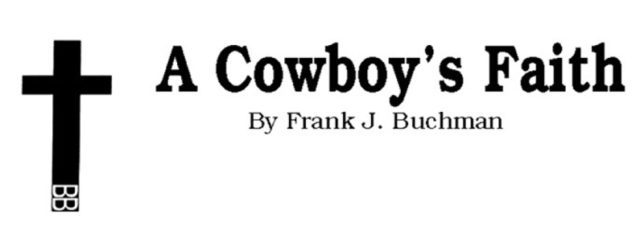A rope is a dangerous tool.
Many accidents with livestock have happened with ropes. All kinds and types of rope are important for doing many things with horses, cattle, sheep and goats. The tools of the stockman’s trade can even come into use with hogs, dogs, cats and chickens, though most would rather not get into the tackle’s procedure with some of those species.
Every day we handle no less than a dozen ropes, typically nylon pieces with a snap on
the end hooked to a horse’s halter for leading and often tying. Of course, there are all varieties of ropes hanging around the place, in every length, shape and condition.
Most of them have been broken and are knotted together to get near the original measurement. Part of it is our fault, because for some reason cotton ropes keep showing up, and almost without exception, they’re broken the first time a colt is tied with them. The kind that don’t break as readily are fastened in eight stalls for daily horse tying.
Frequently reported mishaps with ropes are when cattle ropers get their thumb, and even more fingers, caught between the lariat and saddle horn when dallying. Every roper can quote some experience, and many have lost digits to emphasize their tale.
Other horror stories with ropes include when our neighbor got his foot caught in an open loop on the ground, was dragged by his horse and severely injured; fortunately he recovered. A friend was working his stallion one day when the lead rope became entwined around the man’s arm, breaking his shoulder and causing permanent injury.
In another incident, one of our horse partners was loading four-month-old foals into a trailer, wrapping the lead ropes around the steel sides when his hand became tangled as one colt pulled with all its might. Our friend’s hand and fingers were mangled, requiring considerable doctoring plus healing time, and they were never the same.
Likewise, we must not overlook how hazardous ropes can be to the culprit, or shall we say the livestock being pursued, tied and maneuvered with a rope. Many horses and cattle have suffered injuries when being handled with a rope. More than once, cattle
have been roped and choked to death, because there was no way to get them free to breathe.
A haunt to us is the time we tied a horse to a tree, and went away; when we returned he had became entangled and strangled. Uncountable are the times we’ve had horses in such situations, and managed to save their lives by cutting the ropes. We don’t carry a pocket knife, as advised, but hoof nippers and a linoleum knife are always nearby. Our wrist was recently caught when a horse pulled away, but luckily we only got a scrape.
When a foal got away, we were reminded of Job 39:5: “Who gives the wild donkey its freedom? Who untied its ropes?” Ropes have always been used as indicated in John 2:15: “Jesus made a whip from some ropes and drove out the cattle, scattered the money changers’ coins over the floor, and turned over their tables.” Yet, our best news comes in Psalm 129:4: “But the Lord is good; he has cut me free from the ropes of the ungodly.”
+++ALLELUIA+++
